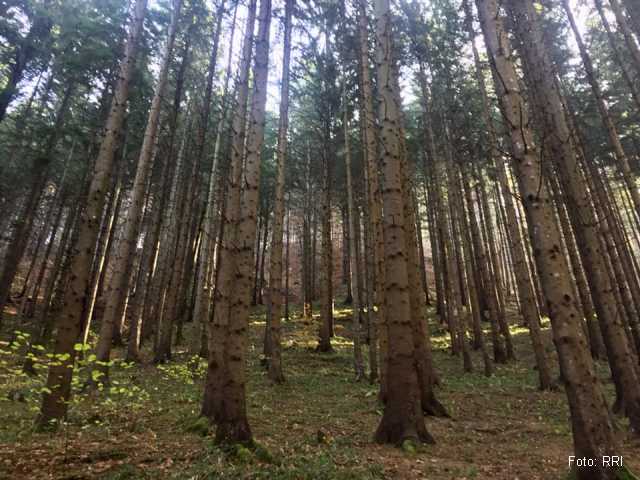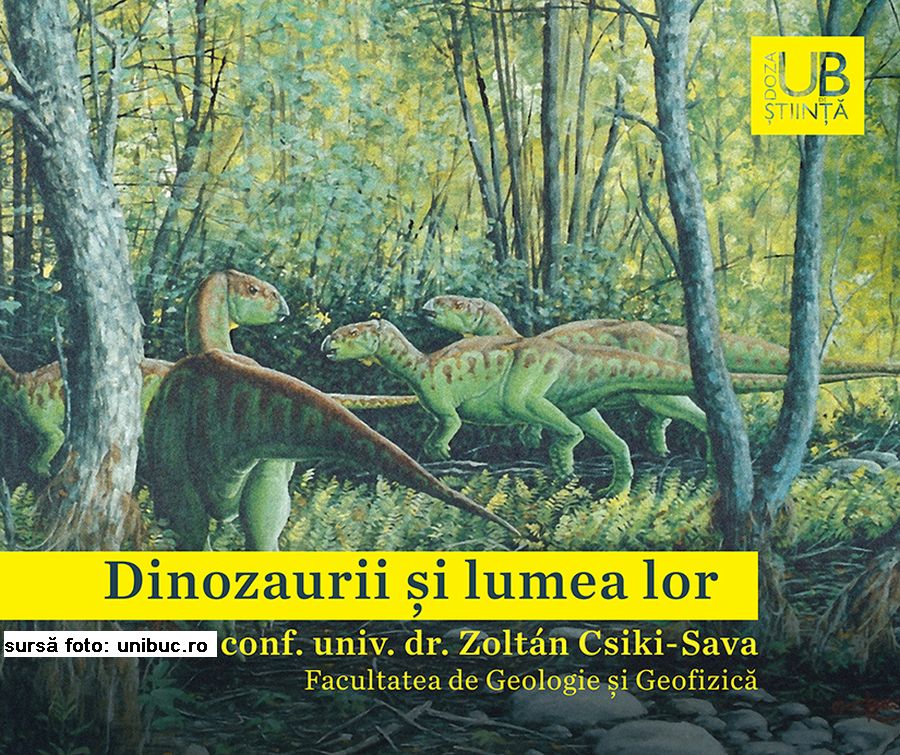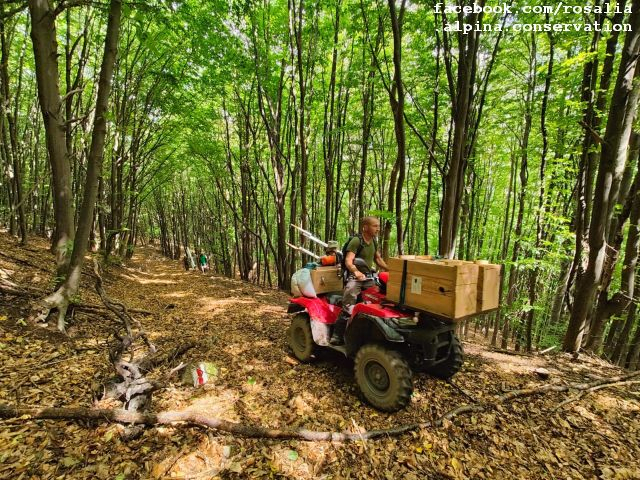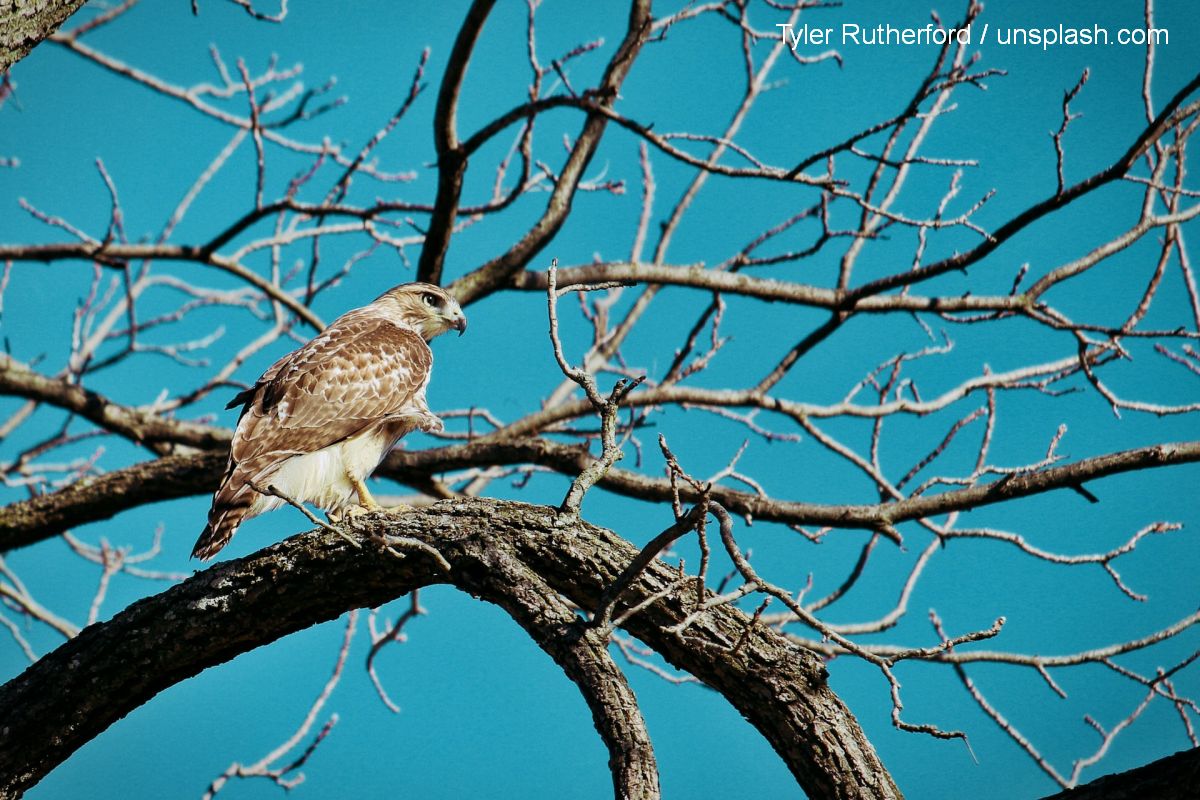The Strambu Baiut primeval forests
The forested area in Maramures County, northern Romania, is 290,000 hectares

Ștefan Baciu, 27.12.2019, 13:00
The forested area in Maramures County, northern Romania, is 290,000 hectares, accounting for 46% of the total surface area. In the old times, however, this was a region covered with thick, barely accessible forests that formed a natural fortress.
The locals had developed a science of when and how to down trees, with a number of rituals performed before going into the forest. They used to believe that the wood from trees growing on the sunny side of the mountains was better, so when it came to building churches, houses or wind mills, they would pick the trees that had grown in sunlight in the middle of the forest. The trees were cut down in the first 2 months of the year, in periods with a full moon, so that the wood would be dry and protected from woodworms.
The forest cover of Maramures is now dwindling. Environmental associations estimate that there are 250,000 hectares of old-growth forests in the Romanian Carpathians, accounting for only 3% of the total forest area. One such primeval forest is located in Strambu Baiut, in the Tibles Mountains. Thousands of different flora and fauna species, day and night birds coexist here in a delicate balance. The old treetops shelter over 10,000 species, ranging from unicellular organisms, fungi, plants, and insects, to large mammals, including boars, deer, chamoix, bears, lynxes and wolves. The local authorities want the region promoted as a tourist site, says Calin Ardelean, a project manager with Worldwide Wildlife Fund Romania:
Calin Ardelean: “The primeval forests in Strambu Baiut, spreading around 3,000 hectares, are natural forests. This means that for hundreds of years they have been growing up naturally, with no human intervention whatsoever. There has been no wood harvesting, no thinning out of diseased or undesired trees, and so on. All processes take place here just as they did a thousand years ago, and this is the most important thing about this place, the fact that this is truly a living lab. We can conduct activities here that would be highly relevant in the context of climate change, research that could highlight the behavior of these natural ecosystems with respect to the climate changes caused by man.
Strambu Baiut used to be a mining region, with gold extracted around the Lapus river sprigs ever since 1315. Since 1989, mining operations in the area have gradually declined, and the locals have started to look for jobs elsewhere. Last autumn the authorities launched a project aimed at preserving biodiversity and at promoting the local resources and values, to the benefit of the Lapus Mountains community. The goal is to switch from gold and silver mining to tourism development, in an attempt to secure incomes for the local community in the medium and long run, Calin Ardelean explains:
Calin Ardelean: “We are trying to capitalise on all these and to turn forests into the gold of the local communities here. These old-growth forests are the golden forests of Maramures, the new gold of this region. WWF Romania has initiated the planning for local development in the Strambu Baiut area and Poiana Botizi village, which are very close to the protected area. We have run some studies on the environment services that can be provided in the protected area. We were surprised to find out that revenues from the direct exploitation of the resources there, that is of the wood and water, would reach around 250,000 euros, but on the other hand, if, as we intend to do, we focused on revenues from cultural services, such as tourism, scientific research, entertainment, education, the revenues would be around 10 million euros per year. Our goal is to put together the infrastructure needed for visiting this region, so as to help increase the number of tourists to some 10,000 people per year, by implementing this management plan.
Tourism is one of the most common environment services used in order to capitalise on the protected area, environmentalists say. Promotion campaigns have already been initiated, and the implementation of the management plan is pending.
The first step will be to ensure small-scale infrastructure in the protected area, e.g. theme routes, information boards, picnic areas, camping areas etc. The next step has to do with the larger-scale infrastructure, including accommodation facilities, museums, visitor centres. Groups of up to 20 tourists will be organised, accompanied by local guides, to make sure that nature is not tampered with, Calin Ardelean also says:
Calin Ardelean: “These old-growth forests in Strambu Baiut area are mixed forests. There are many old trees, trees reaching their natural life span of 400-500 years, trees that have collapsed and died and make up the soil for the new generations. So in autumn and spring these forests are spectacular in terms of colours. In early spring beech trees are a strong vivid green, and in autumn they are golden yellow. The landscape is quite diverse, and the routes are designed so as to cross very different areas, precisely because these forests are not at all uniform, visually speaking. There are surprises at every step.
More than one-quarter of Europes UNESCO-listed beech forests are located in Romania. Alongside other old-growth forests in Romania, the ones in Strambu-Baiut and Grosii Tiblesului were included in 2017 in the UNESCO world heritage list, ensuring tighter protection rules.
(translated by: Ana-Maria Popescu)






























